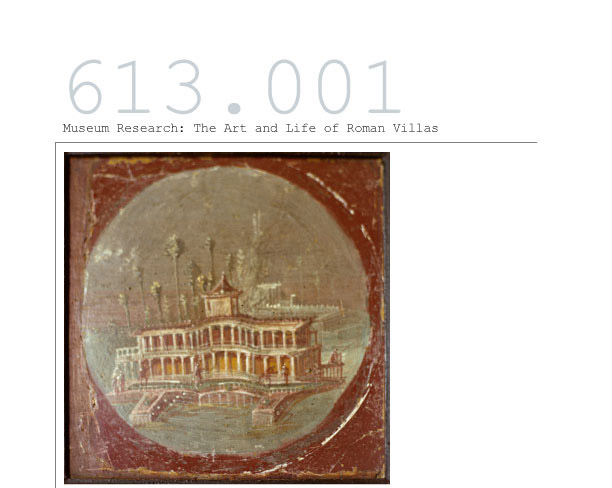
This course will examine the architecture and art (primarily wall paintings, sculptures, and mosaics) of Roman villas in the context of social, intellectual, economic, religious and political life. It will focus on luxuriously appointed villas in the region of the Bay of Naples that were destroyed in the eruption of Mount Vesuvius in AD 79, including, among others, the Villa of the Papyri in Herculaneum, the Villa of the Mysteries in Pompeii, the Villa of Oplontis at Torre Annunziata, and several recently excavated villas at Stabiae. In such villas wealthy Romans lived a life of leisure alongside one that required careful management and productive use of the surrounding land and nearby sea. In our study of artworks and architecture, we will consider the ways in which visual imagery and the built environment responded to and negotiated between these two seemingly divergent modes of life. Social practices (e.g., banqueting, bathing, and the pursuit of intellectual and cultic interests) will be studied against the backdrop of the villa as a farm and the social prestige that the owners garnered from owning and cultivating land while cultivating social and political relationships. The course will breifly compare Roman villa life to that of Renaissance Italy. Students will have an opportunity to do research on objects in the Kelsey Museum that are being considered for display in the museum's new Upjohn wing. Requirements: class attendance and participation, one or two class presentations, two short papers, midterm and final examinations. Graduate students enrolled in HistArt 613 must write a substantial research paper. Estimated cost of materials: less than $50. IV. 1.
Instructor: Elaine Gazda
email:gazda@umich.edu
email:gazda@umich.edu
- Tuesday and Thursday *Meets with HA 394
- 11:30am - 1:00pm
- 180 Tappan Hall
- Credits: 3
- Seminar